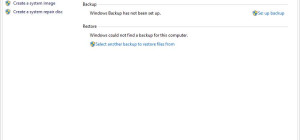Education has been reformed greatly over the past few decades. Largely, this alteration has been provoked by the rise of technological advances. At this day and age, it is hard to imagine the "modern" classroom without a wide array of laptops, a state-of-the-art writing board, and electronic Tablets.
Included in such a technological shift is what is called a Classroom Response System. Broadly speaking, these systems aim to help teachers quickly asses and obtain an idea of what the students at hand do or do not understand. CRS is an electronic system that allows for student input - the input is then sent to the teacher. One can see how this device would be of immediate use to an instructor. Whether a teacher asks a question during class, they could quickly and efficiently gather the responses. Another use is when a teacher asks an opinionated question to a class and the teachers want to know what the students think. The students could then write down their responses, which would then be promptly displayed on an electronic board at the front of the classroom for everyone to see. Basically, this electronic system is an advanced version of class participation - having students "speak up" in class. While there may seem to be only a trivial difference between the CRS and other traditional forms of engaging students on the classroom, the possible outcomes for using this system with students in class is rich, even somewhat unpreceded.
Clearly, one could see Classroom Response Systems could enhance the learning experience for students by simultaneously allowing the students to become engaged in their own learning and enabling the instructor to gain a better understanding of the topics that are most difficult for students to comprehend. In terms of allowing students to become self-engaged in their learning, the Classroom Response System would be a wonderful asset. In a conventional classroom, active learning most usually takes the form of participation, where students raise their hands to ask a question and the teacher responds. Indeed, this is a valuable method to allow students to begin to think on their own in a classroom, but it falls short because of under coverage bias: only the students who feel confident enough to speak in front of the entire class or know the material well enough to consistently answer the questions are permitted to answer. This serves injustice to the more reticent students. With the Classroom Response System, on the other hand, all students will have a chance to become self-reflective and analytical thinkers, no matter what their predisposition may be
In the perspective of the teacher, the Classroom Response System provides detailed rather than scattered or biased information about student understanding and growth. Teachers are certainly not mind-readers - they have to instead find ways to see what their students understand well and less so. With the gathered responses provided by the Classroom Response System, the teacher can gain insight on the concepts that are difficult, and could potentially craft homework assignments that focus on the weaker area of students' knowledge. As such, students have an opportunity to have a more sculpted, individualized learning experience than they would have without using the Classroom Response System.
Besides the most obvious benefits, there are other implicit advantages to using these technological systems. Studies have shown that students in classrooms that have CRSs implemented have higher attendance than those that do not. Perhaps this could be explained by the high amount of dialogue that these systems create between the student and the teacher - high dialogue often correlates to understanding and eagerness to learn, which would boost enrollment. Another logistical perk is the ease at which quizzes and tests can be assigned. Rather than having to look around for paper and worry about obtaining enough pencils. All an instructor would have to do is hand each student a "clicker" Moreover, these electronic systems make for easy, efficient grading, so that student's results could be obtained immediately.
Teachers all over the country are practicing new teaching techniques, many of which involve incorporating high-powered technology into the classroom. But the CRS, based upon a simple idea, can lead to a wide number of benefits for both the students and teachers. In essence, the Classroom Response system catalyzes and quickens the learning process on all fronts, including active learning, active listening, teacher comprehension of students' strengths and weaknesses, and an individualized learning experience for the students. If one is in the process are attempting to try new technologies or methodologies in order to foster understanding, then the Classroom Response System should be in one's radar. In other to use these systems, an instructor must purchase a set of "clickers." These clickers are used to record the responses of each student. Purchasing a set is not highly expensive, either: they are within a budget for a school.
For more information visit: www.meridiaars.com








